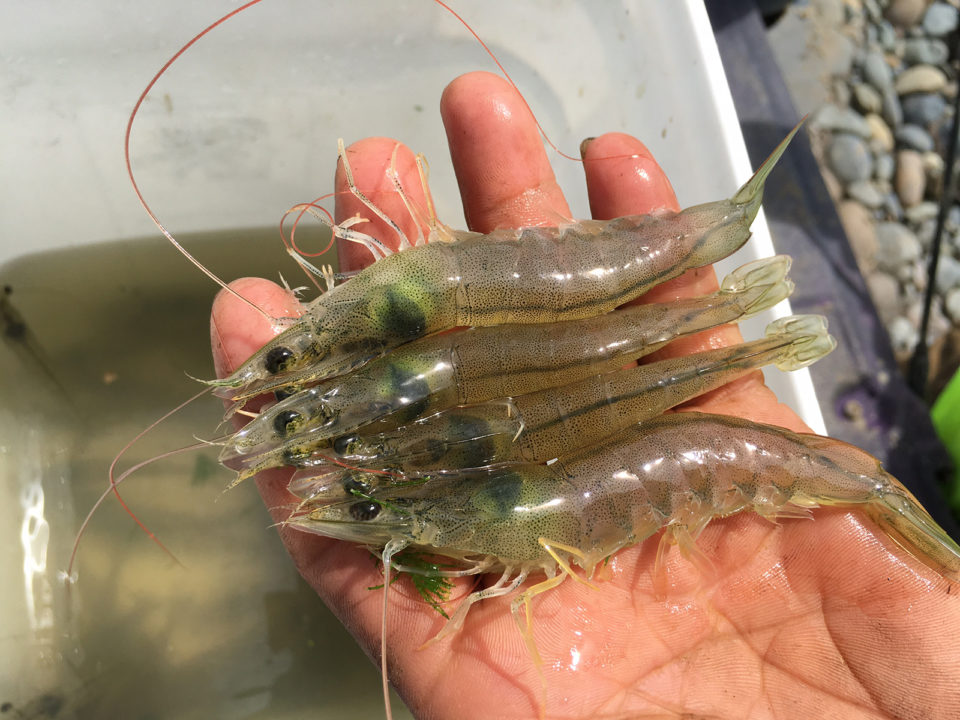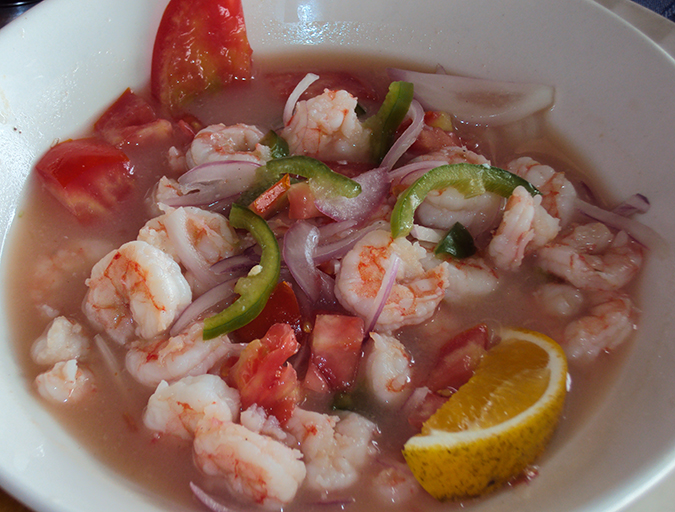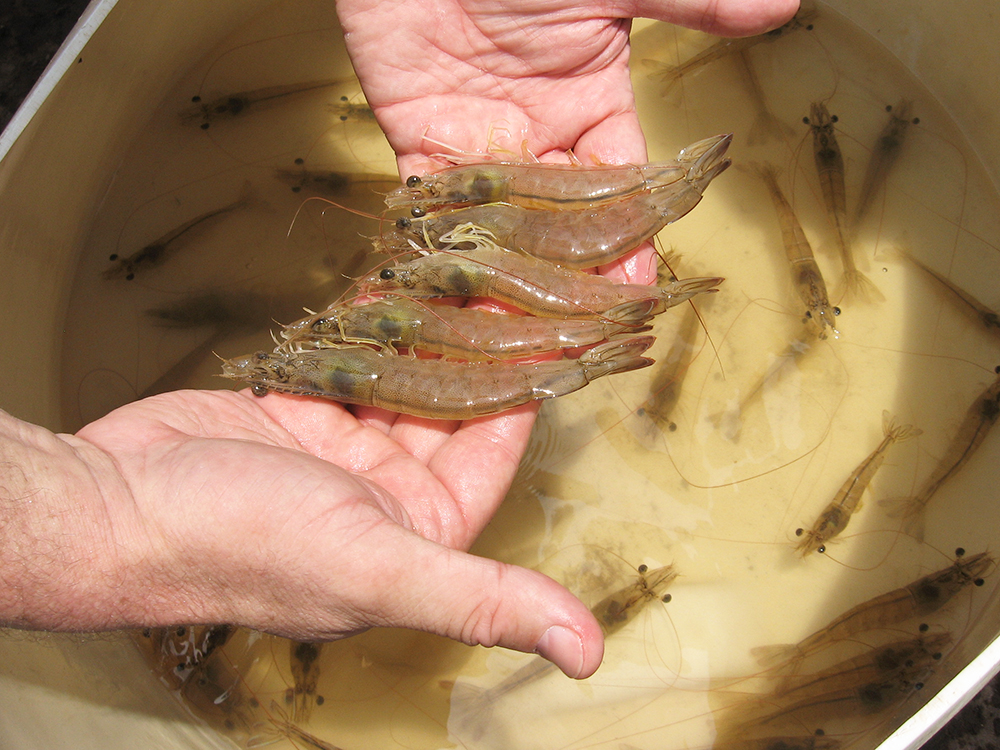Summaries of relevant papers presented at annual World Aquaculture Society conference

A much-anticipated theme at the recent Aquaculture America 2018 was that of shrimp diseases.Many aquatic animal diseases caused by viruses, bacteria, fungi, parasites and other undiagnosed and emerging pathogens have affected and will continue to have a significant impact as our industry expands to meet the challenge of increased production.
Many factors contribute to aquatic disease emergence, including production intensification; increased, unregulated introduction of species and global trade in live animals and their products; improper application of known, effective biosecurity measures; and others.
Continuing to increase sustainable aquaculture production will require more attention to health management and diseases. Here are summaries of various shrimp disease papers presented at the recent Aquaculture America 2018 conference in Las Vegas, Nev., USA.
First report of AHPND in the United States
Arun K. Dhar and colleagues from the Aquaculture Pathology Laboratory at the University of Arizona reported on the first instance of Acute Hepatopancreatic Necrosis Disease (AHPND) in the United States.
In June 2017, a disease outbreak affected shrimp farms producing Pacific white shrimp in Texas and caused large-scale mortalities. Authors tested shrimp samples from these farms through duplex polymerase chain reaction (PCR) performed using DNA isolated from hepatopancreatic tissue, and OIE-approved primer sets were used to positively detect AHPND-causing Vibrio sp. carrying binary toxin genes (pir A and pir B).
The presence of DNA containing the toxin genes in these samples was additionally confirmed by another set of OIE-approved primers. Then, PCR was carried out to identify the presence of Vibrio species in hepatopancreas tissue, showing that the DNA samples isolated from P. vannamei hepatopancreas tissue represented V. parahaemolyticus. PCR-based genotyping indicated that the V. parahaemolyticus present in the Texas samples of P. vannamei represent the Mexican genotype and not the Asian genotype.
“Our results showed the P. vannamei shrimp from Texas farms experiencing large-scale mortalities contained V. parahaemolyticus causing AHPND; to our knowledge, this is the first report of the presence of AHPND causing V. parahaemolyticus in the U.S.”
Genetic improvement a powerful tool
John Buchanan and co-workers (Center for Aquaculture Technologies) discussed genomic selection and the future of breeding in shrimp, indicating that the availability of SPF (Specific Pathogen Free) shrimp broodstock has had a major impact on shrimp aquaculture, from reducing the incidence of disease to facilitating more traditional family-based breeding for shrimp.
“From a breeding perspective, one of the inadequacies of the SPF system is that it does not allow for genetics from the growing ponds to be incorporated into the breeding program due to biosecurity reasons.”
Similarly, selection for other traits such as disease resistance and carcass quality prevent broodstock on which a trait was measured from returning and contributing to the breeding nucleus. Consequently, the only way to use this information for genetic improvement is to rely on family and sib-ship information.
This approach is not ideal for several reasons, including 1) the requirement for enough members of every given family to be sampled to produce good phenotypic data, 2) the accuracy of selection is limited as within family genetic effects are not captured. Mass selection approaches suffer from the same short comings in biosecurity and suffer from the risk of inbreeding depression.
Genomic selection was developed to accelerate genetic gain and to increase the accuracy of selection, and consequently increase the genetic gains per generation while simultaneously allowing for the control of inbreeding on a whole-genome level. It is based on the estimation of genomic similarity to predict breeding values based on the determination of DNA sequence, rather than sibship relationship.
It is a powerful tool for many reasons: 1) it allows for increases in selection accuracy; 2) it allows for selection of breeding candidates from different genetic backgrounds that are more likely to perform well; 3) it allows for the control of inbreeding (relatedness) in whole-genome wise fashion; 4) it allows the selection on phenotypes that cannot be measured on the candidates without depending solely on family information – this can have a great impact on shrimp breeding, as it would allow the accurate incorporation of genetic data from ponds without increasing biosecurity risks.
Application of genomic selection is feasible when combining an economically efficient method for scanning the genome of broodstock for SNP (single nucleotide polymorphism) markers, and genomic imputation to reduce the overall burden of genotyping costs.
“With this system, the economic costs for incorporating genomic selection to accelerate shrimp breeding programs are no longer barriers to implementation.”
Microsporidium in frozen artemia
Siddhartha Kanrar and Dhar (University of Arizona) reported on the detection of a microsporidium in frozen artemia. According to the authors, Hepatopancreatic microsporidiosis, caused by the microsporidian Enterocytozoon hepatopenaei (EHP), is an emerging disease of Pacific white shrimp (Penaeus vannamei) and black tiger shrimp (P. monodon) culture, and this disease was originally described in 2003 in black tigers cultured in Thailand, and the etiologic agent was later described in 2009. Since the initial report of this disease from Thailand, EHP has now been reported from several South and Southeast Asian countries including China, Indonesia, Malaysia, Vietnam and India.
EHP is diagnosed through H&E histology examination of hepatopancreatic tissue from suspected animals, in situ hybridization and PCR. The PCR diagnosis of EHP is based on the amplification of 18S rDNA gene. During routine screening of samples for EHP, an approximately 510 bp amplicon was obtained for a frozen artemia sample but not from the dry artemia cyst sample. Since EHP has not been reported from either dry cysts or frozen artemia samples, PCR amplification was carried out using EHP-specific primers based on the EHP spore wall gene. No EHP-specific amplicon was obtained for frozen artemia samples.
To determine the identity of the 510 bp amplicon from frozen artemia, amplicons were sequenced. “The sequence analysis revealed that the ~510 bp amplicon from frozen artemia origin showed similarity to Enterocytospora artemiae that infects artemia. This result indicated that the primers based on the 18S rDNA gene is not highly specific for the detection of EHP, especially when frozen artemia samples are screened, and alternative primers such as those based on the EHP spore wall and other genes need to be used for EHP detection in shrimp and frozen artemia.”
Increasing shrimp survival rates against EMS
Maarten Jay van Schoonhoven and Raquel Tatiane Pereira (Olmix, The Netherlands) discussed their company’s specialized work in working with algal extracts and montmorillonite clay. They have developed a unique technology where an algal-interspaced montmorillonite is associated with copper in order to potentiate the electrostatic activity of clay and the antibacterial properties of copper. “This unique complex results in a synergistic action against pathogenic bacteria and contributes to improve the animals’ gut health.”
This technology was tested in two universities under disease challenge with two common pathogens in L. vannamei shrimp culture. The first trial was carried out at Kasetsart University, in Thailand, and after a challenge test with Vibrio harveyi, there was a dose dependent increase in survival among the different shrimp groups, with animals receiving 0.4 percent MFeed showing the highest increase in survival followed by the group receiving 0.2 percent MFeed in their diets.
At a follow-up trial conducted at Can Tho University in Vietnam, PL25were subjected to an immersion challenge test with Vibrio parahaemolyticus causing EMS disease. Results show a dose dependent increase in survival among the different groups, with the group receiving 0.4 percent MFeed, showing a nearly 90 percent survival rate, followed by the group receiving 0.2 percent MFeed in their diets. “These scientific results support the ability of MFeed as an efficient and sustainable strategy on management of EMS in whiteleg shrimp.”
Detection and quantification of NHPB
Fernando Aranguren and Dhar discussed new methods for the detection and quantification of Hepatobacter penaei (NHPB) by PCR and qPCR. Necrotizing hepatopancreatitis (NHP) is a disease caused by a Gram-negative bacteria recently classified as Hepatobacter penaei (NHPB), which affects cultured penaeid shrimp in several Western Hemisphere countries including the U.S. and most Central and South American countries shrimp farming countries.
NHP is a chronic disease that causes up to 95 percent mortality in shrimp populations in growout and broodstock ponds, and its occurrence is related to specific environmental conditions such as high temperature and high salinity. NHP diagnosis and confirmation is carried out by histology, in situ hybridization, PCR and immunohistochemistry.
The OIE recommended methods for NHPB detection are by PCR and qPCR based on the amplification of 16S rRNA gene. This highly conserved gene is a component of the 30S small subunit of a prokaryotic ribosome that has some critical role in protein synthesis. However, due to the lack of specificity of 16S rRNA-based amplicon for NHPB, new protocols were developed for the detection and quantification using PCR and qPCR, with several target genes.
Authors used samples that had tested positive for NHP-B at the UAZ-APL using the conventional PCR method, to validate this new PCR method. Samples positive for NHPB from Ecuador, Brazil, Colombia, Mexico, Texas, Belize and Panama collected during 2011 through 2016 were used to validate these new assays.
Among the different primers tested, those based on the FlgE and FlbB genes yielded specific amplification with high sensitivity. The newly designed primers did not provide any non-specific amplification as obtained earlier based on the 16S rRNA gene. Per the authors “we have described highly specific and sensitive PCR and qPCR methods for the detection and quantification of NHPB in shrimp HP and feces samples.”
Hatchery biosecurity and risk management
Craig L. Browdy (Zeigler Aquaculture Research Center, Harbor Branch Oceanographic Institution, Florida Atlantic University) presented a comprehensive discussion of hatchery biosecurity and risk management.
There are increased health risks for the shrimp aquaculture industry because of emerging shrimp pathogens being increasingly prevalent in hatcheries worldwide. “PL health and quality are critical to hatchery profitability, and many hatcheries are rigorously screening for diseases and tightening their biosecurity protocols to ensure the health of their postlarvae.”
Refocusing hatchery biosecurity entails continual risk assessment and risk management based on the most up to date information on pathogens and control strategies. Hazard analysis and critical control point (HACCP) methods. Using HACCP methods, mechanisms of transmission and amplification can be identified and controlled to eliminate excludable pathogens and to
prevent the buildup of non-excludable bacterial pathogens, both in the hatchery and at the farm. Treatment of incoming water and management of water systems and effluents can minimize introduction and buildup of bacteria and spores in the hatchery.
Broodstock can be another significant vector of disease, necessitating quarantine and rigorous disease testing prior to their introduction into maturation production systems. Fresh and live maturation feeds have also been shown to be important vectors for introducing pathogens into hatcheries.
“Many hatcheries are finding that the use of probiotics and partial replacement of live and fresh feeds with high quality prepared diets with disease free fresh feed supplements can significantly reduce the loading of pathogens in their maturation and larval rearing systems, leading to more consistent larval heath. The future of shrimp farming will require continued scientific advancement in pathology, genetics, innovative nutrition and hatchery management.”
Author
-
Darryl E. Jory, Ph.D.
Editor Emeritus
Global Aquaculture Alliance
Related Posts

Intelligence
Facts about shrimp and cholesterol
Many people, including health-conscious consumers, are concerned about the cholesterol content of foods such as meat, eggs and dairy products. In the case of shrimp, the cholesterol story is different because a number of research studies have demonstrated that the high percentage of “good fats” in shrimp reduce the impact of cholesterol, and that a majority of people can eat shrimp as part of a balanced diet.

Intelligence
We can grow better shrimp, and in better ways
The recent Central American Aquaculture Symposium in Choluteca, Honduras, brought together more than 600 participants to discuss industry issues and perspectives. The focus was shrimp diseases and their impacts on production, as well as practical alternatives to face these issues and move forward.

Health & Welfare
Four AHPND strains identified on Latin American shrimp farms
Two virulence genes are known to encode a binary photorhabdus insect-related toxin that causes acute hepatopancreatic necrosis disease in shrimp. The pathogenicities of these V. campbellii strains were evaluated through laboratory infection and subsequent histological examination in P. vannamei shrimp.

Health & Welfare
A holistic management approach to EMS
Early Mortality Syndrome has devastated farmed shrimp in Asia and Latin America. With better understanding of the pathogen and the development and improvement of novel strategies, shrimp farmers are now able to better manage the disease.


